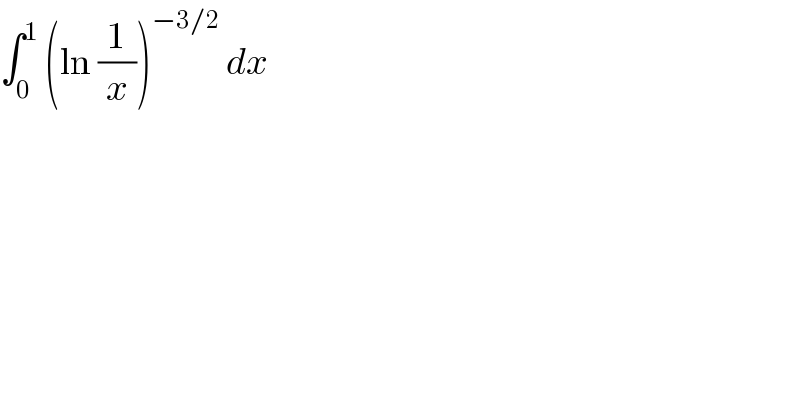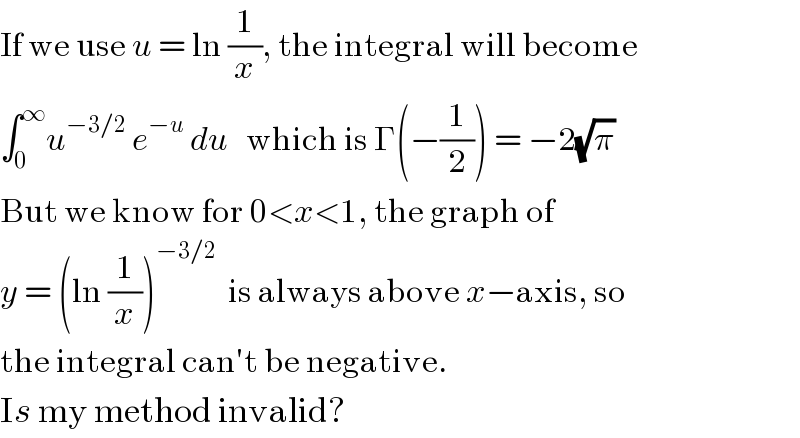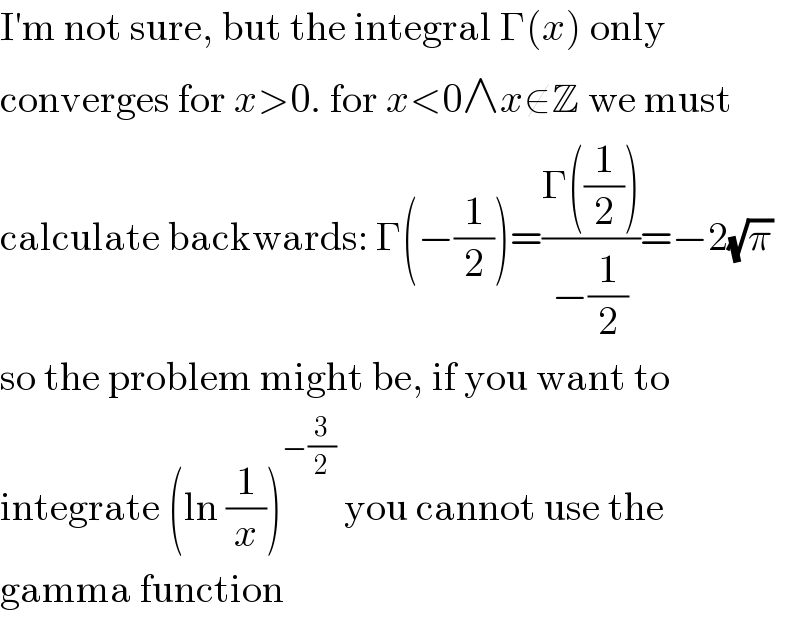
Question and Answers Forum
Question Number 85781 by Joel578 last updated on 24/Mar/20

Commented by Joel578 last updated on 24/Mar/20

Commented by MJS last updated on 24/Mar/20

Answered by MJS last updated on 24/Mar/20
![∫(ln (1/x))^(−3/2) dx= [t=ln (1/x) → dx=−xdt] =−∫e^(−t) t^(−3/2) dt= [by parts: f ′=t^(−3/2) → f=−2t^(−1/2) g=e^(−t) →g′=−e^(−t) ] =2e^(−t) t^(−1/2) +2∫e^(−t) t^(−1/2) dt= [2∫e^(−t) t^(−1/2) dt= [u=(√t) → dt=2(√t)du] =4∫e^(−u^2 ) du=2(√π)∫((2e^(−u^2 ) )/(√π))du=2(√π)erf (u) = =2(√π)erf ((√t))] =2e^(−t) t^(−1/2) +2(√π)erf ((√t)) = =((2x)/(√(ln (1/x))))+2(√π)erf ((√(ln (1/x)))) +C but this integral does not converge for 0≤x≤1...](Q85787.png)
Commented by Joel578 last updated on 25/Mar/20

